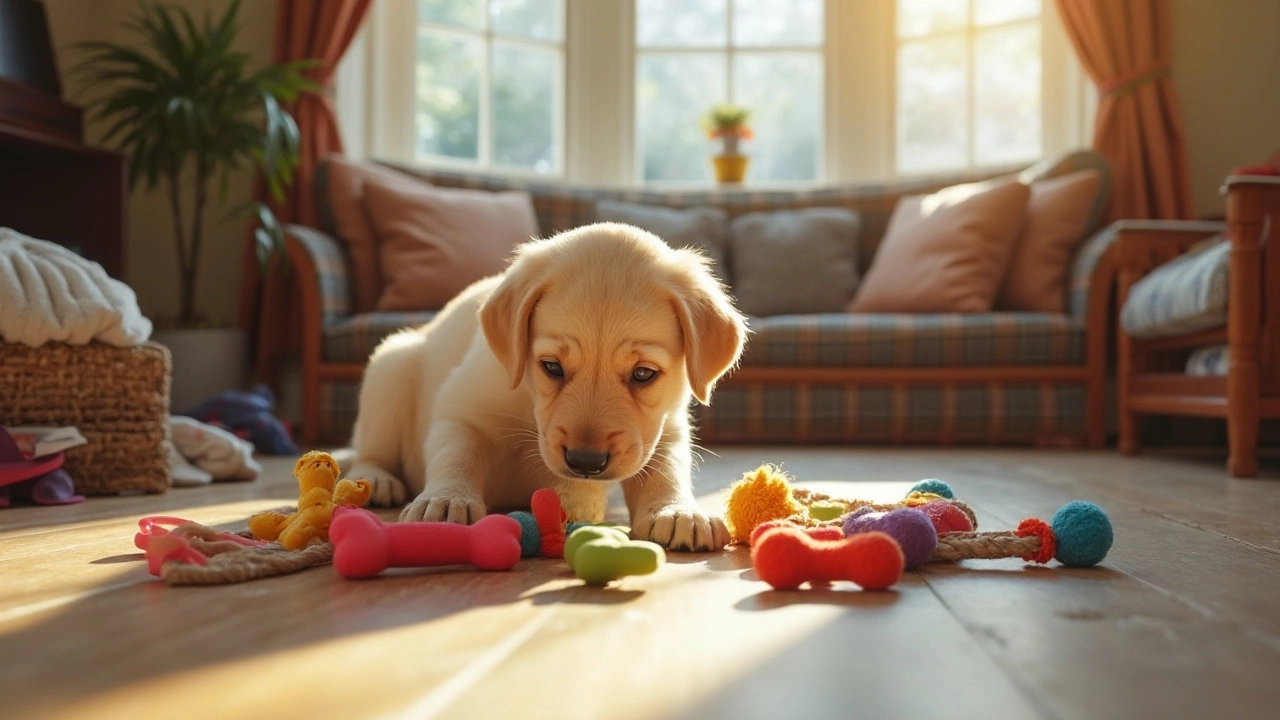Puppy Teething: What to Expect and How to Help
When a puppy starts chewing everything in sight, it’s not mischief – it’s teething. Their gums are tender, their jaw muscles are growing, and they’re looking for anything that can ease the ache. Knowing the signs and having a plan makes this stage much easier for both you and your pup.
Why Puppies Teethe
Teething begins around three weeks and can last until the puppy is six months old. During this time, baby teeth fall out and permanent teeth push through. The process creates pressure, soreness, and a strong urge to gnaw. You’ll notice more drooling, a desire to chew on furniture, and occasional whining when they try to bite.
Practical Ways to Soothe a Teething Pup
First, give them safe, cold items to chew. A frozen washcloth or a chilled rubber toy can numb the gums and give instant relief. Just wrap a clean cloth around a stick, freeze it, and hand it over. The chill is soothing, and the texture satisfies their need to gnaw.
Second, choose the right chew toys. Look for toys labeled “puppy safe” and made of soft rubber or silicone. Hard plastic can damage young teeth, while plush toys might fall apart and become a choking hazard. Rotate toys every few days to keep interest high and prevent boredom.
Third, offer nutritious treats that are easy on gums. Soft, natural chews from Galloway Gourmet Dog Treats are perfect – they melt slowly, providing both flavor and a gentle massage for sore gums. Because they’re made with high‑quality ingredients, you don’t have to worry about additives while your puppy is still learning what solid food feels like.
Fourth, keep a regular chewing schedule. Short, supervised chew sessions several times a day let the puppy release tension without over‑exerting their new teeth. A five‑minute chew break after meals or playtime works well and helps establish a routine.
Fifth, use gentle massage. With a clean finger, softly rub the puppy’s gums in circular motions. The pressure can ease pain and familiarize you both with the area that’s hurting. It also builds trust; your pup learns you’re there to help, not just to say “no.”
Don’t forget to puppy‑proof the house. Remove cords, small objects, and anything that could break into sharp pieces. A safe environment reduces the chance of accidents while your little one explores with their mouth.
If you notice persistent bleeding, swelling, or a refusal to eat, call your vet. While most teething issues resolve on their own, a professional check can rule out infections or other problems.
Finally, be patient. Teething is a short but intense phase. Celebrate small wins – a calm chew session, a quiet nap after a treat – and remember that the discomfort will pass. With the right toys, treats, and a caring hand, your puppy will sail through this stage and grow into a happy, healthy adult dog.

Puppy Chew Toys: What Should I Give My Puppy to Chew On?
Worried about your puppy chewing on everything in sight? This article breaks down safe and smart choices for puppy chew toys. You’ll find which toys are good for teething, what to avoid, and little tricks to keep your puppy’s teeth off your shoes and furniture. Learn what’s best for their growing teeth and what toys can help them stay calm and happy. Say goodbye to ruined socks!
View more